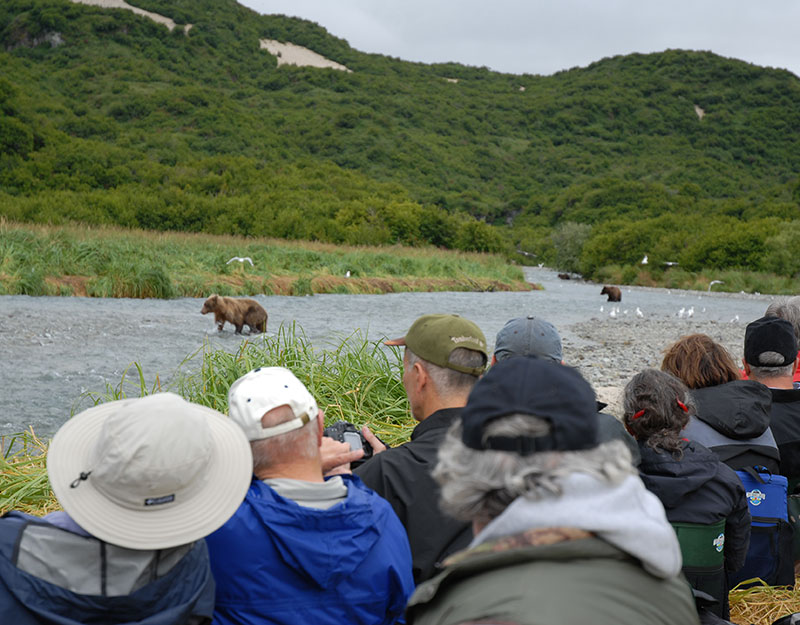Our tours leave Homer’s Beluga Lake in downtown Homer every day around 9 a.m. for a spectacular hour-long flight across Cook Inlet. We pass Cape Douglas, a group of volcanic mountains which protrude into the mouth of Cook Inlet. This is the start of Shelikof Strait, the body of water that separates Kodiak Island from the mainland. These mountains have glaciers that come all the way to the beach and beautiful blue-green lakes filled with giant icebergs that have calved from the ice fields. There are dozens of short streams and estuaries behind the beach line.
We land at the mouth of a river that flows out of a large tidal area. In the early summer, the bears migrate to the coast for the mating season and feed on fresh, juicy sea grasses that sprout in the spring. It is not unusual to see 35 to 40 bears at one time and they can be as close as 50 yards. The Katmai coast is a very scenic place with great opportunities to take photos with 7,000 ft. snow covered mountain peaks as a backdrop.
Mating season is especially interesting because it encourages bears to interact with each other — a lot. The older mating boars will be checking on sows to see if they are receptive. Spring is also when the sows chase away their two-year-old cubs. If cubs are around when sows come into estrus, it may be fatal. Dominant boars might go as far as to kill the offspring.
We wear hip boots for this trip. They are necessary to get from the airplane through shallow water to the beach. We will eat lunch at the plane and then store everything back into the plane so bears do not tear up our gear. They are very intelligent, curious creatures and inspect anything new to their territory.
From the airplane, it is an easy walk of about 15 or 20 minutes where we will sit for the day taking pictures (that is if we are not held up along the way by bears). This area often has tundra swans and all kinds of nesting ducks. Last year, we had a den of red fox right behind where we set up. It was great! The baby foxes (kits) had no fear of us at all.
We sit in the same place every trip because it helps bears and other animals to get used to us more easily than if we were moving around or advancing towards them.
As the season progresses, they do not seem to notice us at all. We always stay together as a group so we do not disturb the animals.


